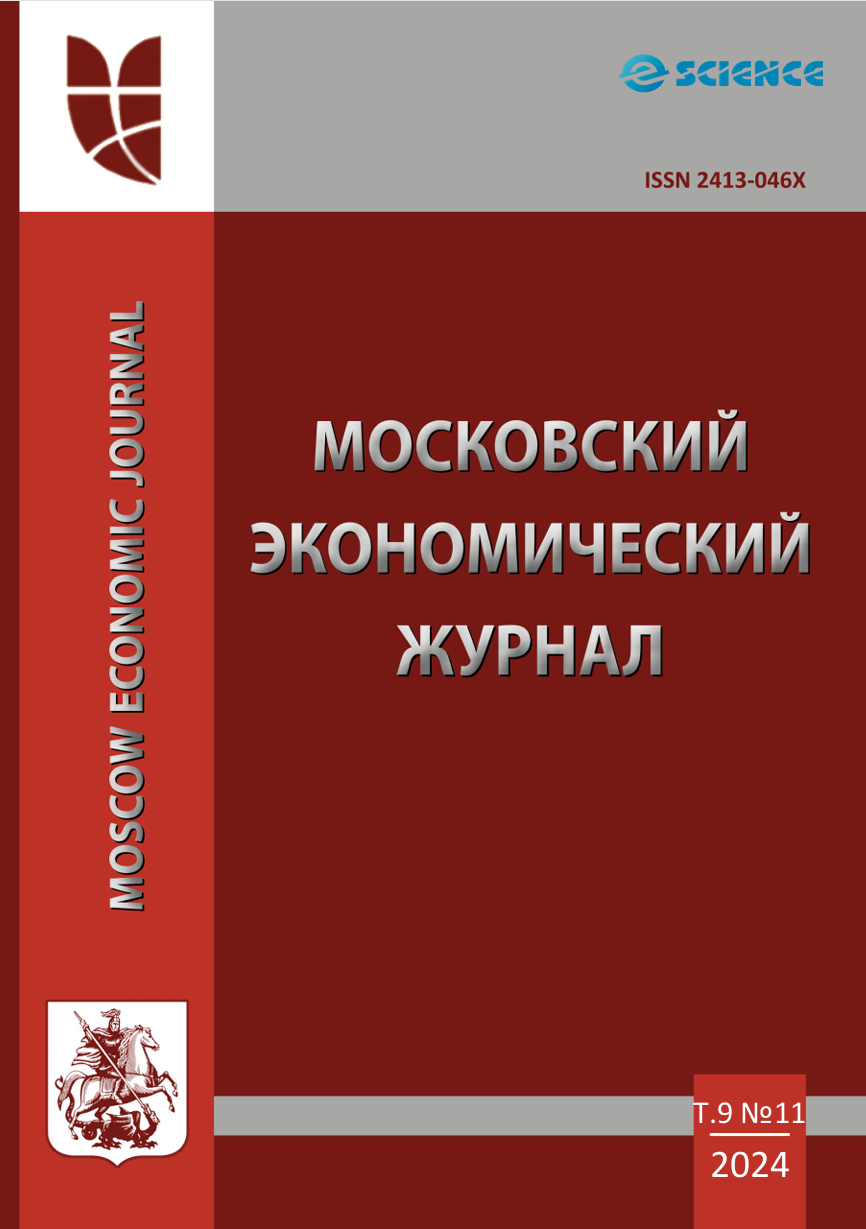УДК 632.93 Мероприятия по защите растений
УДК 577.2 Молекулярные основы жизни. Молекулярная биология
Генетическая трансформация стала важным инструментом для модификации ценных растений путем включения новых генов с желаемыми признаками. Эти стратегии особенно полезны для сельскохозяйственных культур с целью повышения урожайности, устойчивости к болезням, толерантности к стрессу окружающей среды (холод, жара, засуха, засоление, гербициды и насекомые), а также для увеличения биомассы и лекарственной ценности растений. Производство генетически модифицированных (ГМ) устойчивых видов с требуемыми признаками и высокой урожайностью способствует достижению целей устойчивого развития. Внедрение генетически модифицированных продуктов питания на рынок повысило потенциальные риски. Правильная оценка их воздействия на окружающую среду и контроль биобезопасности необходимы. В статье представлено обсуждение рисков и преимуществ генетически модифицированных растений и продуктов. Наиболее острыми вопросами являются оценка генетически модифицированных организмов (ГМО) с точки зрения их потенциальной опасности для здоровья человека, экологическое воздействие, перенос генетической информации и влияние на биоразнообразие, регуляторные нормы контроля биобезопасности ГМО и ГМ-продуктов питания. Готовность применять и использовать ГМ продукцию и принятие правил биобезопасности актуальны для всего мира, однако отличаются в разных странах. Применение методов генетической трансформации открывает большие возможности для новых видов растений, однако требуются дополнительные исследования с оценкой рисков.
трансгенные растения; генетическая трансформация; ГМО; перенос генов; ГМ-продукты; биобезопасность
1. UN News. Over 820 Million People Suffering from Hunger; New UN Report Reveals Stubborn Realities of ‘Immense’ Global Challenge. UN News. 2019. https://news.un.org/en/story/2019/07/1042411
2. Alexandratos, N.B.J. World Agriculture Towards 2030/2050. The 2012 revision. Food and agriculture organization of the United Nations. ESA working paper no. 12-03. 2012. Available online: https://www.fao.org/3/ap106ee.pdf (accessed on 11 January 2023).
3. Ghimire, B.K.; Yu, C.Y.;Kim, W.-R.; Moon, H.-S.; Lee, J.;Kim, S.H.; Chung, I.M. Assessmentof Benefits and Risk of Genetically Modified Plants and Products: Current Controversies and Perspective. Sustainability 2023, 15,1722. https://doi.org/10.3390/su15021722
4. Ventura, M.V.A.; Batista, H.R.F.; Bessa, M.M.; Pereira, L.S.; Costa, E.M.; Oliveira, M.H.R. de. Comparison of conventional and transgenic soybean production costs in different regions in Brazil. Res. Soc. Dev. 2020, 9, e154973977–e154973977.
5. Gatew, H.; Mengistu, K. Genetically modified foods (GMOs); a review of genetic engineering. J. Life Sci. Biomed. 2019, 9, 157-163.
6. Szenkovics, D.; Tonk, M.; Balog, A. Can genetically modified (GM) crops act as possible alternatives to mitigate world political conflicts for food? Food Energy Secur. 2021, 10, e268.
7. Houdebine, L.M. Impacts of genetically modified animals on the ecosystem and human activities. Glob. Bioeth. 2014, 25, 3–18.
8. Paine, J.A.; Shipton, C.A.; Chaggar, S.; Howells, R.M.; Kennedy, M.J.; Vernon, G.; Wright, S.Y.; Hinchliffe, E.; Adams, J.L.; Silverstone, A.L.; et al. Improving the nutritional value of Golden Rice through increased pro-vitamin A content. Nat. Biotechnol. 2005, 23, 482–487.
9. Ayaz, M.; Ali, Q.; Farzand, A.; Khan, A.R.; Ling, H.; Gao, X. Nematicidal volatiles from bacillus atrophaeus gbsc56 promote growth and stimulate induced systemic resistance in tomato against meloidogyne incognita. Int. J. Mol. Sci. 2021, 22, 5049.
10. Collins, C.; Laturnus, F.; Nepovim, A. Remediation of BTEX and trichloroethene. Current knowledge with special emphasis on phytoremediation. Environ. Sci. Pollut. Res. Int. 2002, 9, 86–94.
11. Sala, F.; Rigano, M.M.; Barbante, A.; Basso, B.; Walmsley, A.M.; Castiglione, S. Vaccine antigen production in transgenic plants: Strategies, gene constructs and perspectives. Vaccine 2003, 21, 803–808.
12. Marsian, J.; Fox, H.; Bahar, M.W.; Kotecha, A.; Fry, E.E.; Stuart, D.I.; Macadam, A.J.; Rowlands, D.J.; Lomonossoff, G.P. Plantmade polio type 3 stabilized VLPs—A candidate synthetic polio vaccine. Nat. Commun. 2017, 8, 1–9.
13. Yoo, J.H.; Seong, E.S.; Ghimire, B.K.; Heo, K.; Jin, X.; Yamada, T.; Clark, L.V.; Sacks, E.J.; Yu, C.Y. Establishment of Miscanthus sinensis with decreased lignin biosynthesis by Agrobacterium–mediated transformation using antisense COMT gene. Plant Cell Tissue Organ Cult. 2018, 133, 359–369.
14. Van Camp, W. Yield enhancement genes: Seeds for growth. Curr. Opin. Biotechnol .2005, 16, 147–153.
15. Hu, L.; Zhou, K.; Liu, Y.; Yang, S.; Zhang, J.; Gong, X.; Ma, F. Overexpression of MdMIPS1 enhances salt tolerance by improving osmosis, ion balance, and antioxidant activity in transgenic apple. Plant Sci. 2020, 301, 110654.
16. Prakash, D.; Verma, S.; Bhatia, R.; Tiwary, B.N. Risks and Precautions of Genetically Modified Organisms. ISRN Ecol. 2011, 369573.
17. Deepa, A. Genetically Modified Foods: Benefits and Risks; Massachusetts Medical Society: Boston, MA, USA, 2015.
18. Chekol, C. The Health Effects of Genetically Modified Foods: A Brief Review. Int. J. Nutr. Sci. 2021, 6, 1047.
19. Tudisco, R.; Lombardi, P.; Bovera, F.; Cutrignelli, M.I.; Mastellone, V.; Terzi, V.; Avallone, L.; Infascelli, F. Genetically Modified Soya Bean in Rabbit Feeding: Detection of DNA fragments and evaluation of metabolic effects by enzymatic analysis. J. Anim. Sci. 2006, 82, 193–99.
20. Cribbs, A.P.; Perera, S.M. Focus: Genome editing: Science and bioethics of CRISPR-Cas9 gene editing: An analysis towards separating facts and fiction. Yale J. Biol. Med. 2017, 90, 625.
21. Akinbo, O.; Obukosia, S.; Ouedraogo, J.; Sinebo, W.; Savadogo, M.; Timpo, S.; Mbabazi, R.; Maredia, K.; Diran Makinde, D.; Ambali, A. Commercial release of genetically modified crops in Africa: Interface between biosafety regulatory systems and varietal release systems. Front. Plant Sci. 2021, 12, 605937.
22. de Vos, C.J.; Swanenburg, M. Health effects of feeding genetically modified (GM) crops to livestock animals: A review. Food Chem. Toxicol. 2018, 117, 3−12.
23. Breckling, B.; Reuter, H.; Middelhoff, U.; Glemnitz, M.; Wurbs, A.; Schmidt, G.; Windhorst, W. Risk indication of genetically modified organisms (GMO): Modelling environmental exposure and dispersal across different scales: Oilseed rape in Northern Germany as an integrated case study. Ecol. Indic. 2011, 11, 936–941.
24. Lundquist, K.A. Unapproved genetically modified corn: it’s what’s for dinner. Iowa Law Rev. 2015, 100, 825–851.
25. Acevedo, F.; Huerta. E.; Burgeff, C.; Koleff, P.; Sarukhan, J. Is transgenic maize what Mexico really needs? Nat. Biotechnol. 2011,29, 23–4.
26. Kang 254. Rzymski, P.; Królczyk, A. Attitudes toward genetically modified organisms in Poland: To GMO or not to GMO? Food Sec. 2016, 8, 689–97.
27. Rzymski, P.; Królczyk, A. Attitudes toward genetically modified organisms in Poland: To GMO or not to GMO? Food Sec. 2016,8, 689–97.











